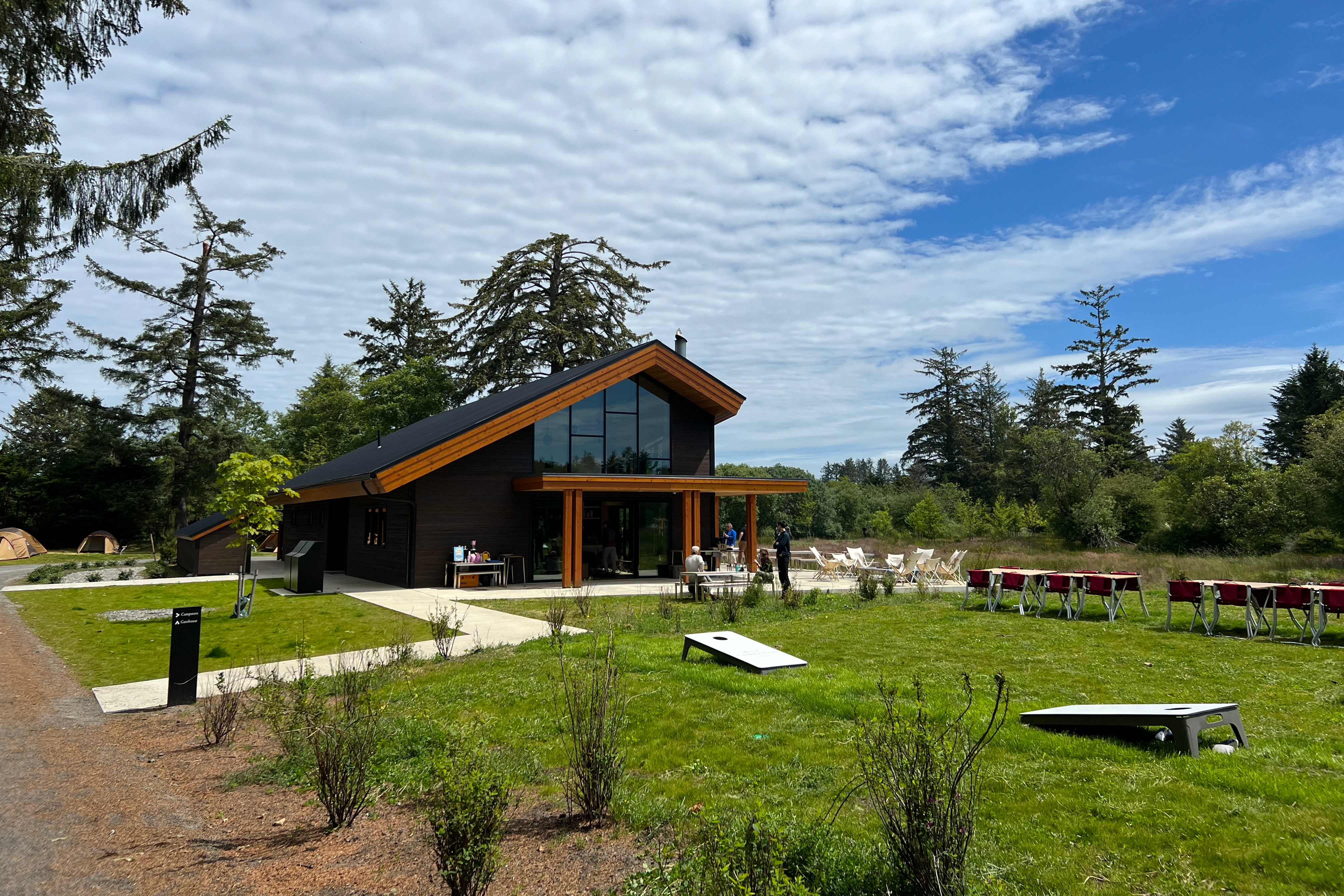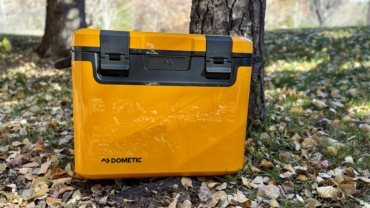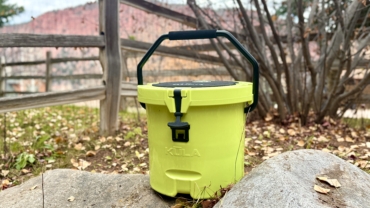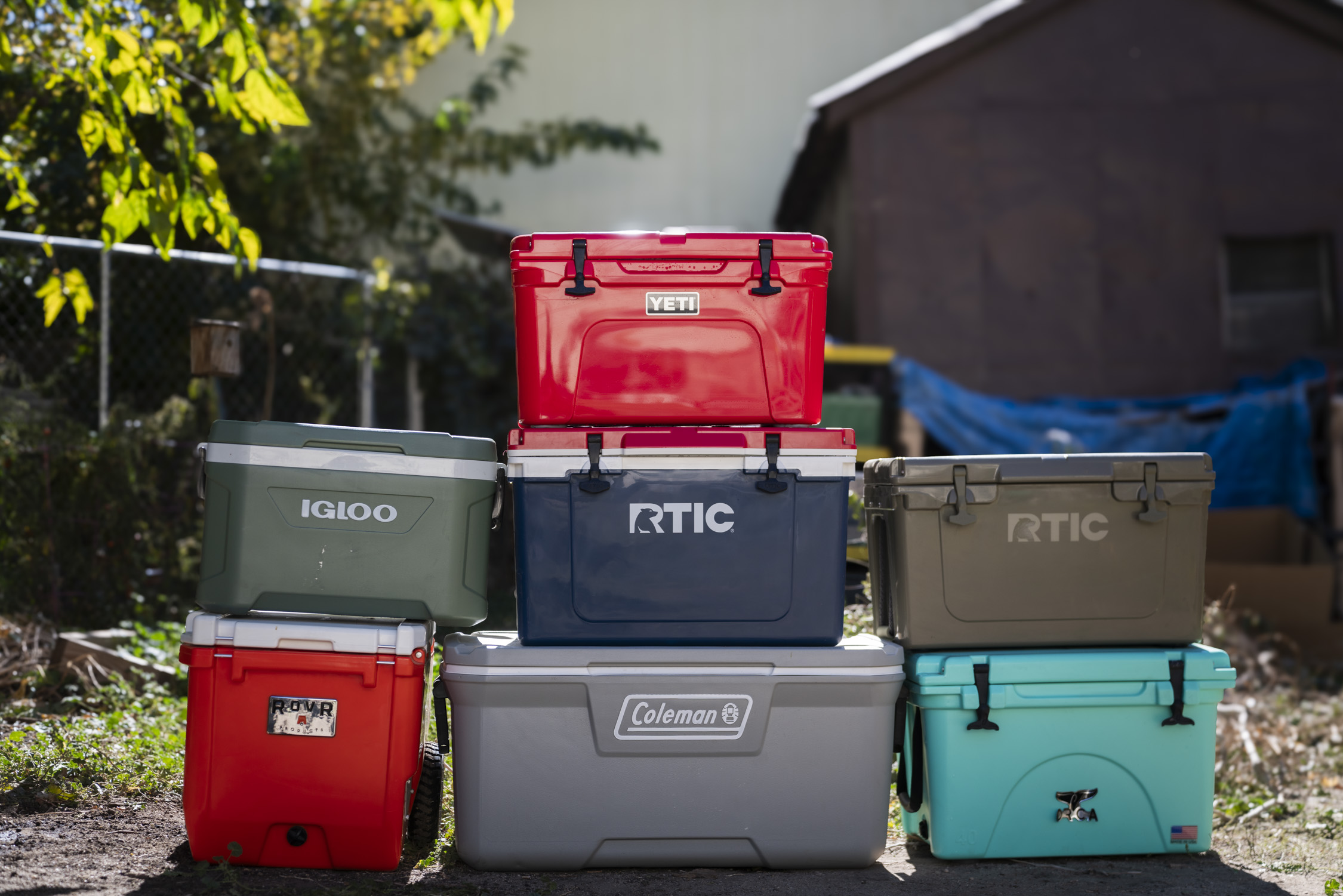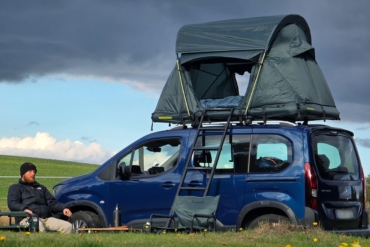People meandered the gravel paths around us between campsites bedecked with Snow Peak gear. The setups were extensive. They all had Tabiki fire pits. Many sported waterproof and fire-retardant awnings, and the tents spanned shapes, sizes, and styles.
I sat with Noah Reis, the vice president of Snow Peak U.S.A., in a grassy area beside a tent. The familiar morning bustle of the campground surrounded us. Couples walked dogs, kids ran around playing, and somewhere, a grill sizzled with the sound of breakfast cooking. Aside from all the gear being branded Snow Peak, the scene could have come out of almost any American campground.
This was the grand opening of Snow Peak’s first U.S.-based Campfield, a luxury camping location in Long Beach, Wash. Media, business partners, and loyal brand fans had been invited to be among the first to experience this latest venture from the Japanese camping brand.
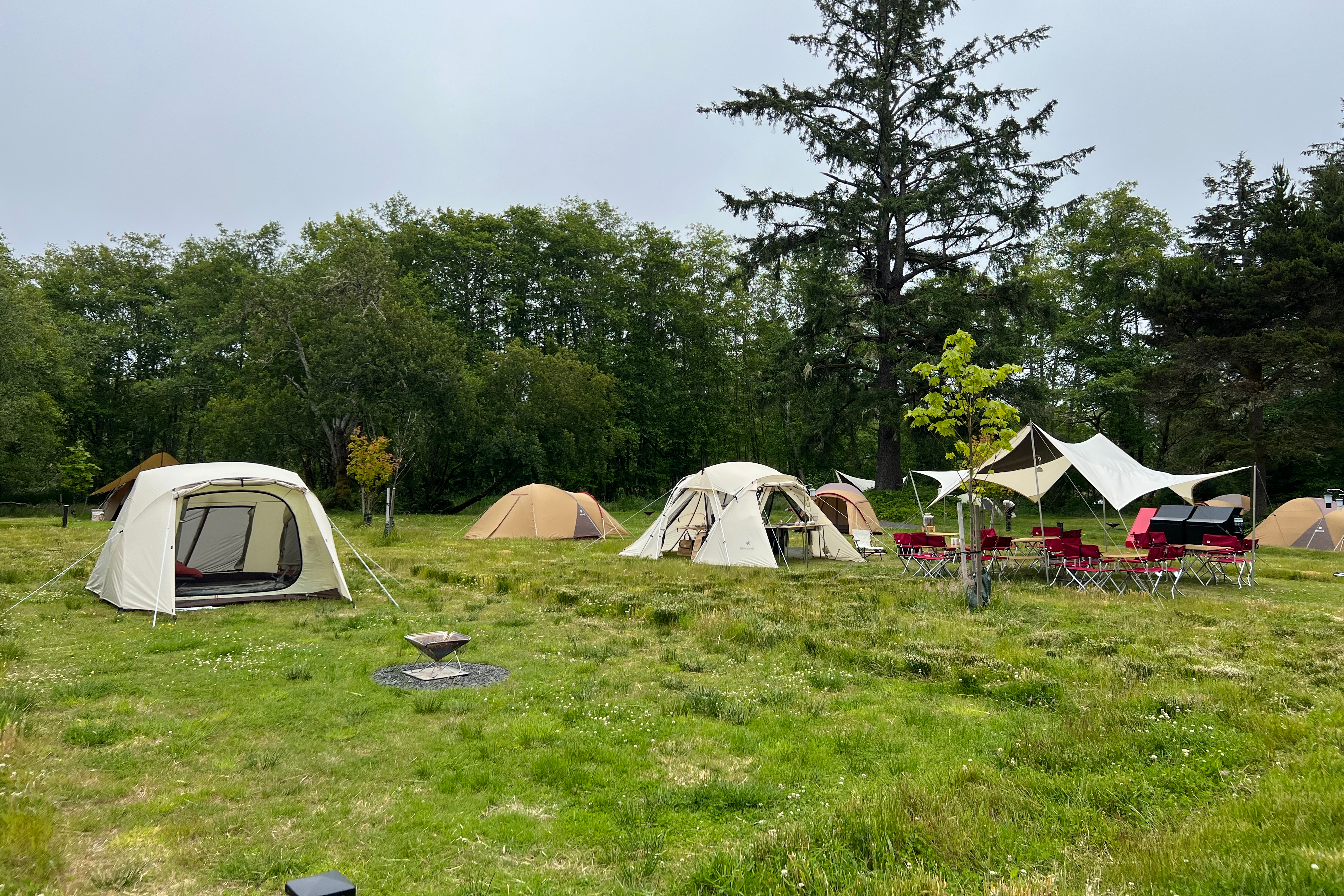
“I think people know us for the micro stoves and titanium cups. They’re pretty iconic. But I don’t think many people [in the U.S.] really know us as a car camping brand that does all this,” Reis said, gesturing around. “There are a lot of different aspects of quality time spent outdoors that we can actually reinvent and rebrand because we offer a totally different activity.”
That sentiment was echoed by Snow Peak’s Chief Brand Officer, Yuichi Uchida, at the ribbon-cutting ceremony later that day.
“We eat fish differently. We drink tea differently. And we camp differently,” Uchida said.
But after that weekend at Campfield’s Grand Opening, I’m not entirely certain that we do camp all that differently. Some equipment, amenities, and aesthetics might be different. The brands (like Snow Peak) are different, too. But at its core, the Eastern and Western approaches to camping didn’t seem all that dissimilar. We hung out in nature. We ate food around the campfire, drank, told stories, and laughed.
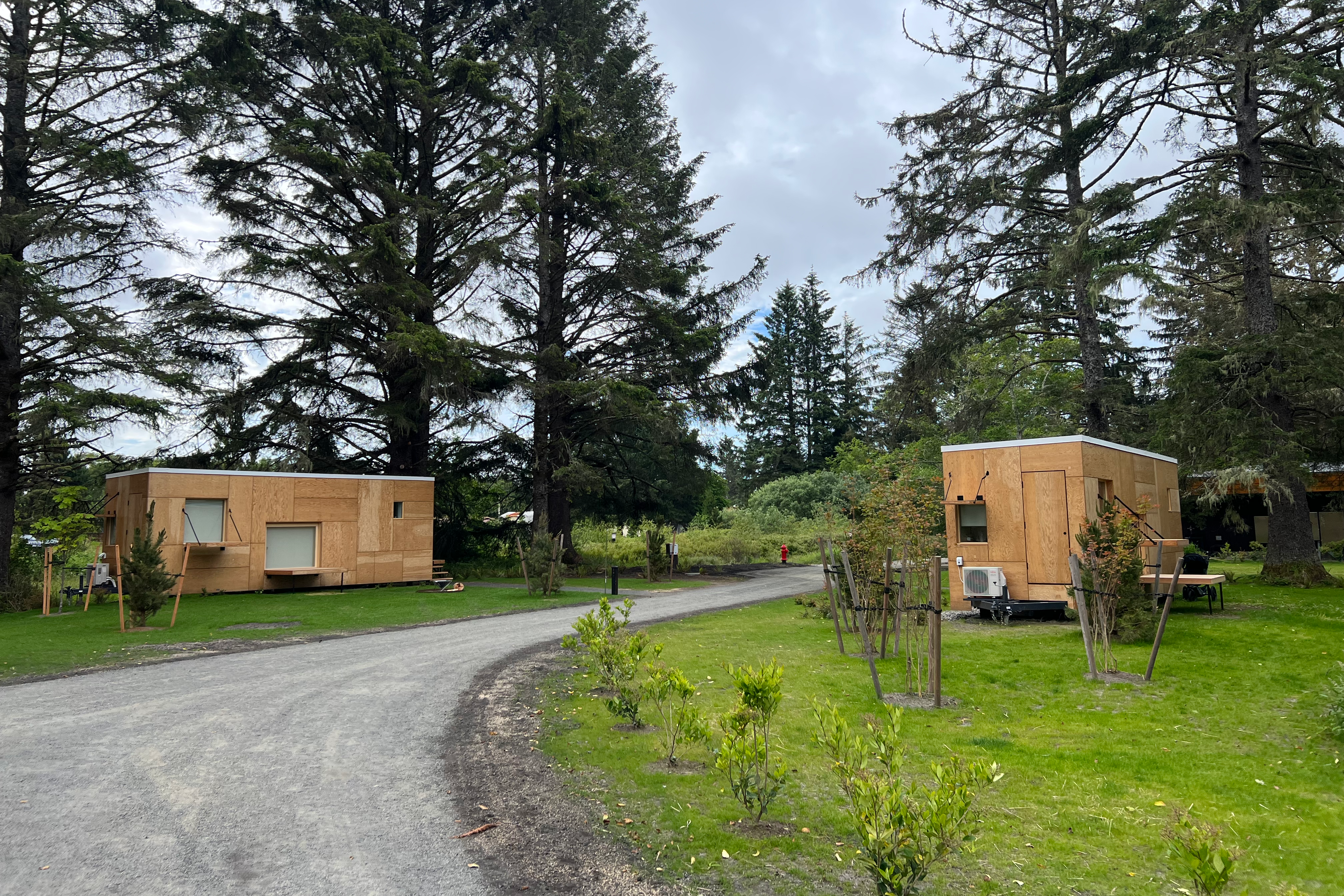
It felt a lot like the American campgrounds I’d grown up in — minus the authentic Japanese onsen spa and pristine bathrooms that would have made my mother’s heart swell with joy.
‘Snow Peak Style’ — Same Heart and Soul
Growing up, camping was a huge part of my childhood. My parents often brag about how they started taking me on trips at the age of 2. We’d sometimes post up in dispersed areas, but the family pop-up camper was a lot more manageable at actual campgrounds. Not to mention the fact that we’d have access to potable water, maybe a communal shower area, a picnic table, and a fire pit.
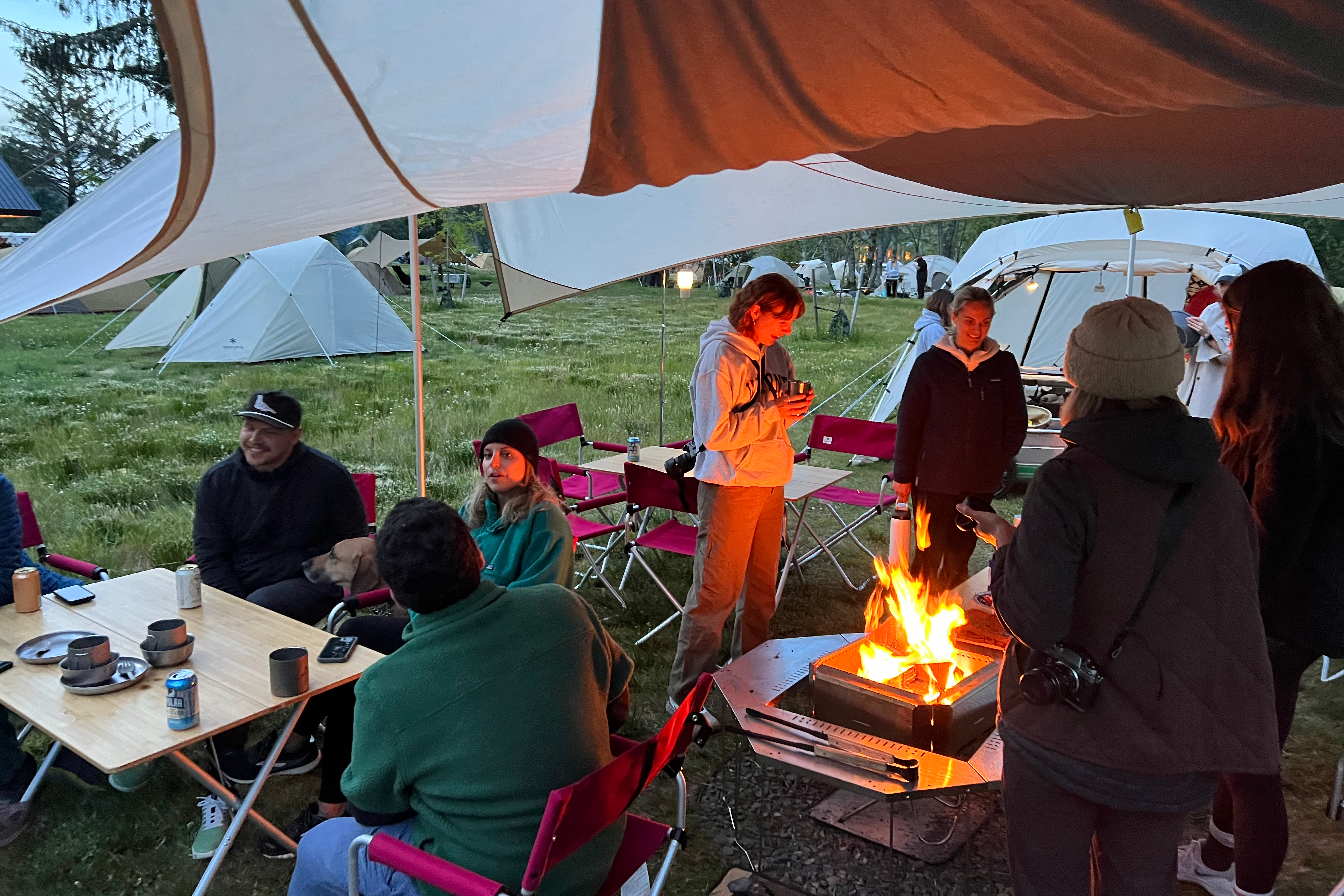
I remember meeting and playing with kids from other campsites. My parents and their friends would kick back, crack beers, or pour wine, and start cooking dinner. They’d chat the neighbors up, or we’d all walk around exploring the area. Those are some of my fondest early memories, and I couldn’t even tell you where most of them took place.
When I traveled to Washington with Snow Peak to stay at this new Campfield location, I’d been expecting to experience a totally foreign and culturally contrasting style of camping than what I’ve known.
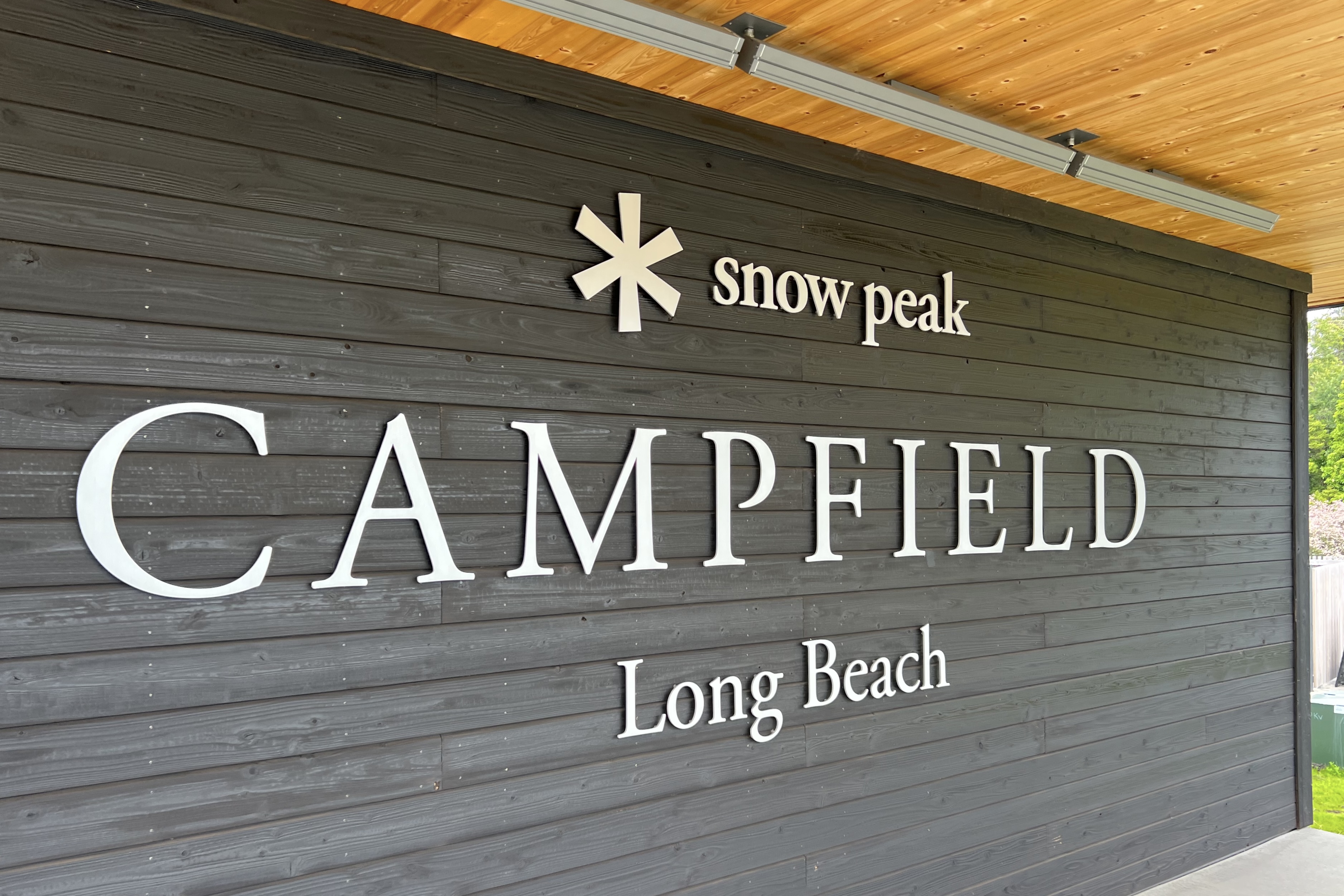
On some levels, it was. I’ve never had access to anything like the Ofuro spa with its heated pool, gas fire pit, cold plunge, and sauna made with temple-grade hinoki wood. Nor have I ever seen an American campground with such nice bathrooms (although this was the opening weekend).
And I sure as hell haven’t ever seen frozen sashimi and cold sake at a campground’s supply station.
Beyond all that, though, the heart and soul of the campground seemed no different to me. We were all there to spend quality time with people outside, in nature, with nothing to do but cook, eat, drink, read books, practice knot tying, chop wood, build fires, and all the rest. It wasn’t ultralight backpacking. It wasn’t a hunting camp.
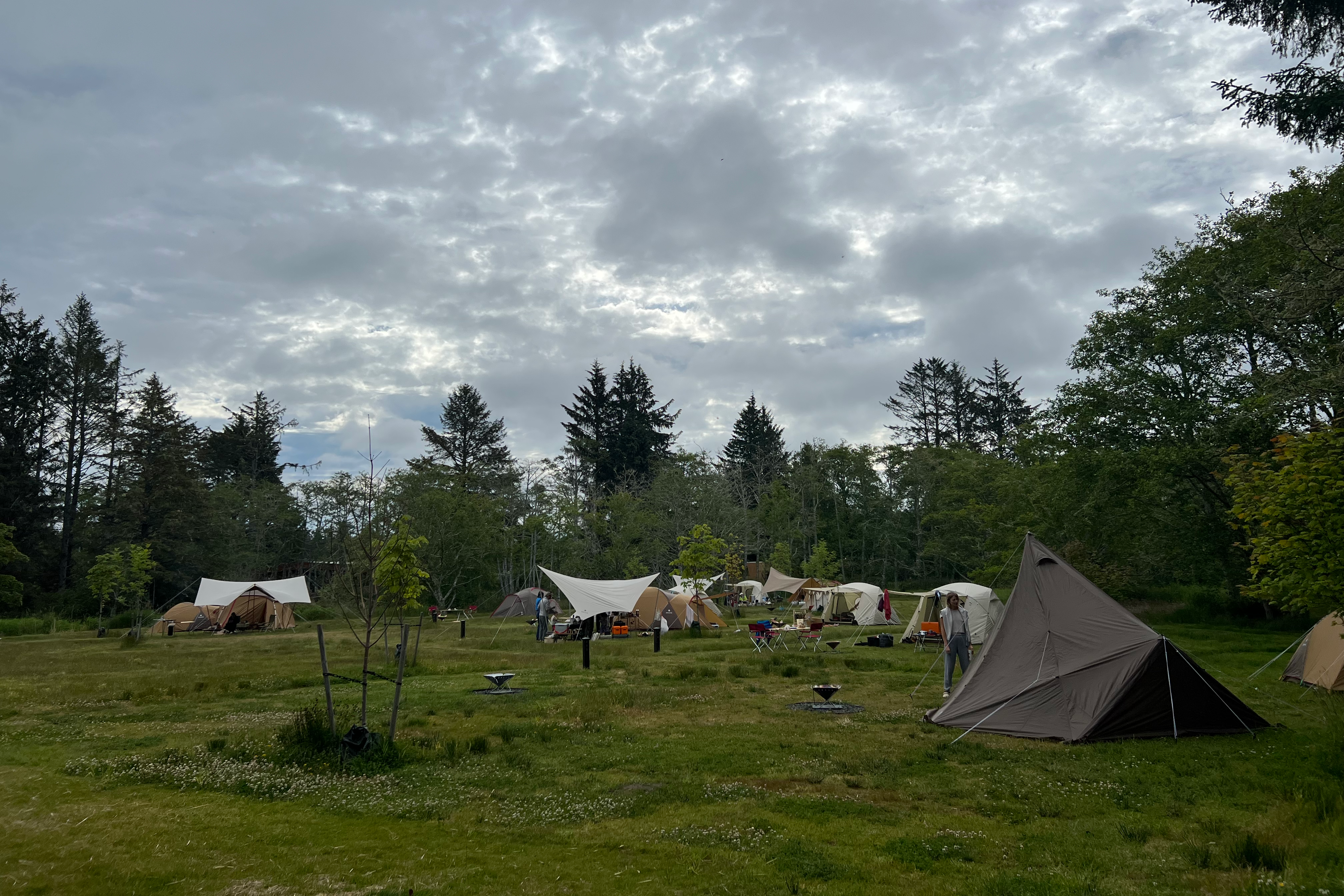
But it was car camping, just as I’ve always known and loved it. And the Japanese have a clear affection for it too.
“This is what we mean when we say, ‘Snow Peak style of camp’,” said Reis.
‘You Don’t Have to Be a Boy Scout’
Reis freely admitted that ultralight backpackers, minimalists, and budget campers are not Snow Peak’s target demographic.
But for campers who value comfort, families who want amenities, and those who simply want to invest in high-quality car camping gear, Snow Peak is a viable (albeit expensive) option.
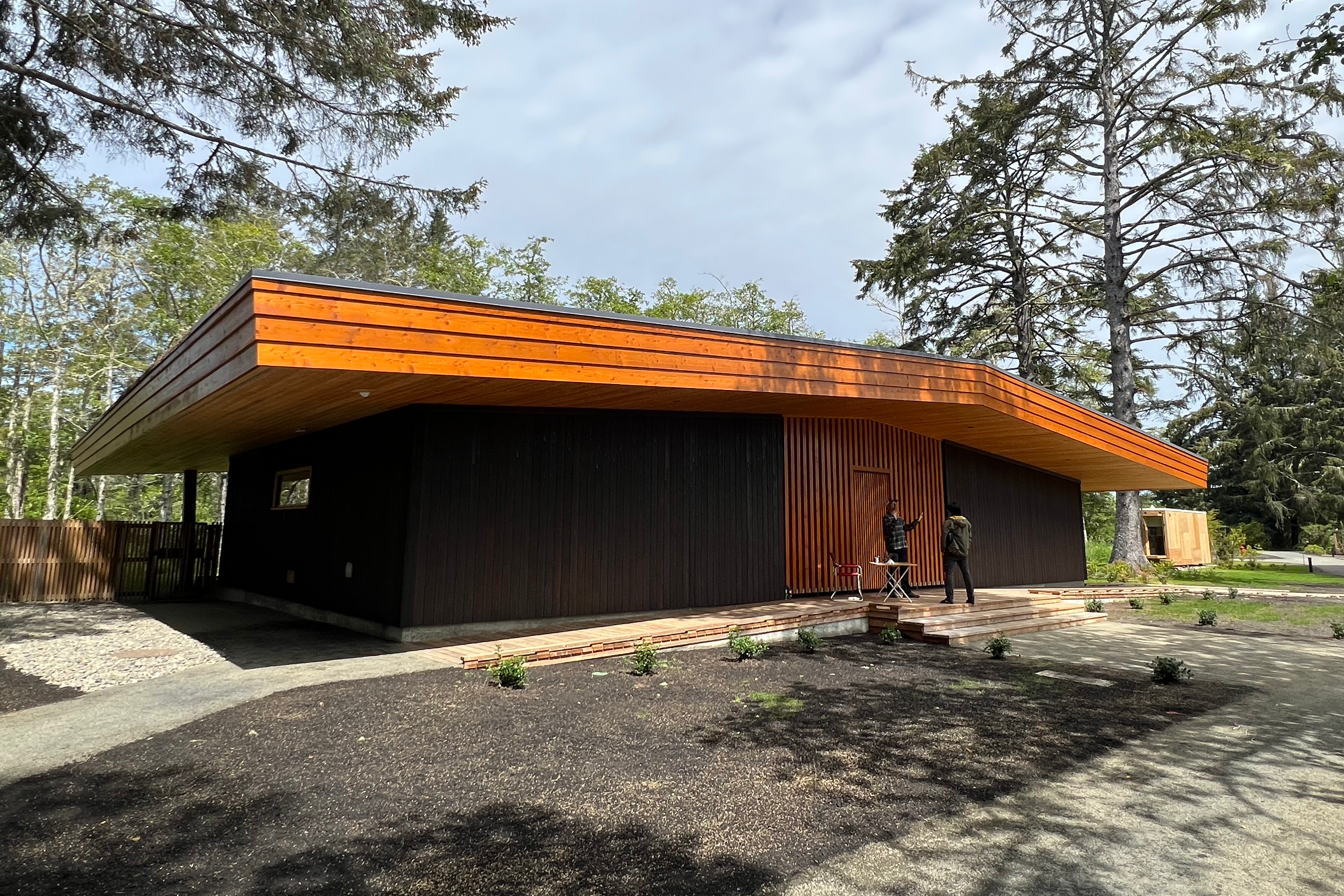
“You don’t have to be a Boy Scout. You can go outdoors and be comfortable,” Reis said. “I think one of the things that Snow Peak is really blessed with is that we have a clear definition of what the activity is that we’re focused on. We want to make camping as elevated and comfortable as possible.”
The brand has over 500 camping SKUs — from folding propane torches to titanium dishware, sporks and chopsticks, tents, sleep systems, Tabiki fire pits and grill sets, advanced camp cooking setups, and more. It once made a fire-resistant kimono (although discontinued in the U.S.). Counting all of its apparel, Snow Peak claimed to have well over 3,000 SKUs.
It is a large inventory aimed at a relatively small demographic, but Reis said that Snow Peak is far and away the most popular camping brand, not just in Japan but also in Asia at large. And in the U.S., its customer base is extremely loyal. There is an almost cult-like following behind Snow Peak.
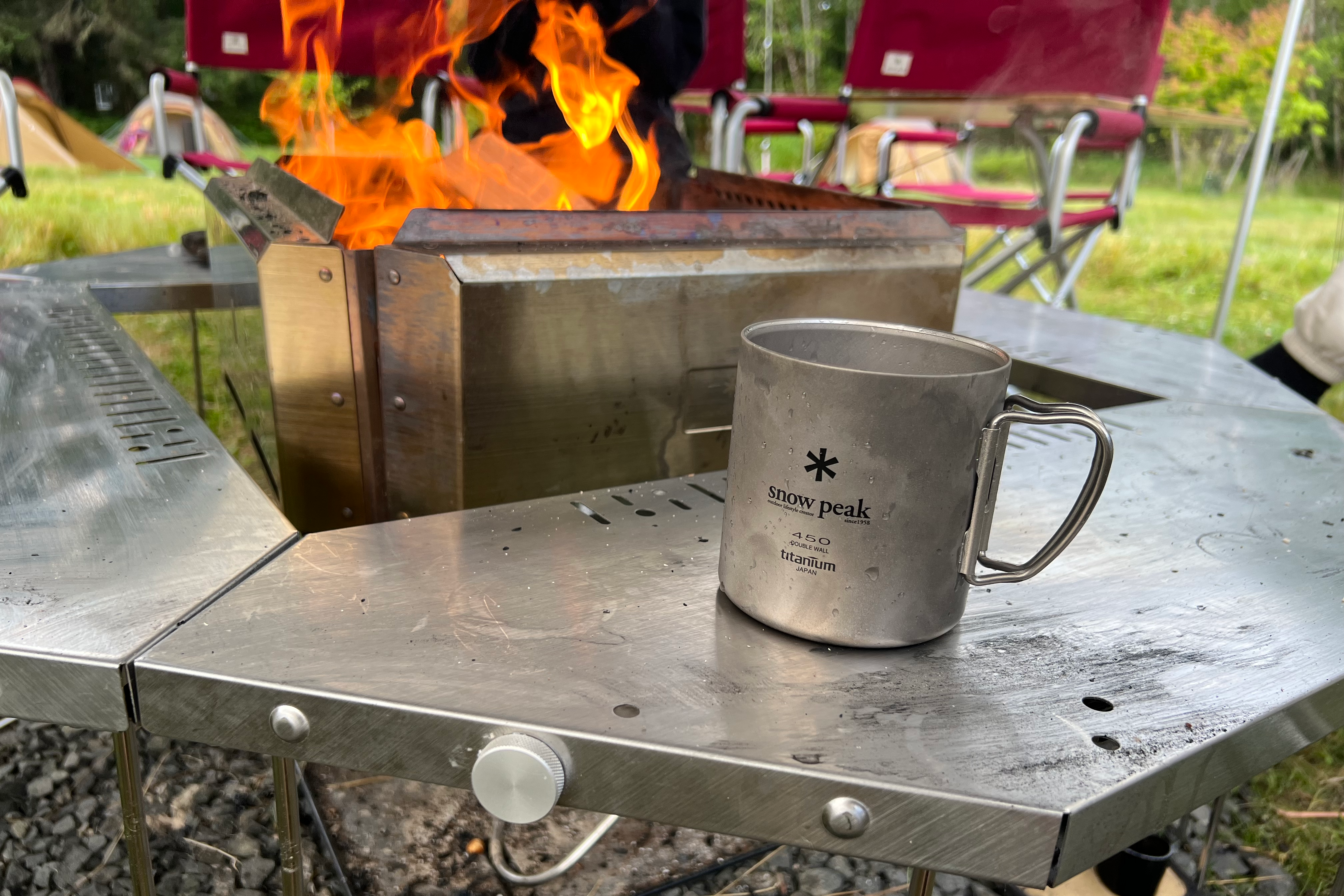
Still, Reis said that Snow Peak’s biggest struggle in the U.S. is brand awareness, which he estimates is about 5%. The hope is that this Campfield location will help spread the word about the brand by bringing it to life and allowing people to interface with it.
“We’re hoping this cracks the door for us,” Reis said.
Snow Peak Campfield: Breaking Into the US
The Long Beach Campfield is the brand’s first location in the U.S., but it is far from its first foray into the luxury camping scene. There are 6 Campfield locations in Japan alone and more in Korea, Taiwan, and also China. You can bring your own camping gear (it doesn’t have to be Snow Peak) or rent Snow Peak gear on-site.
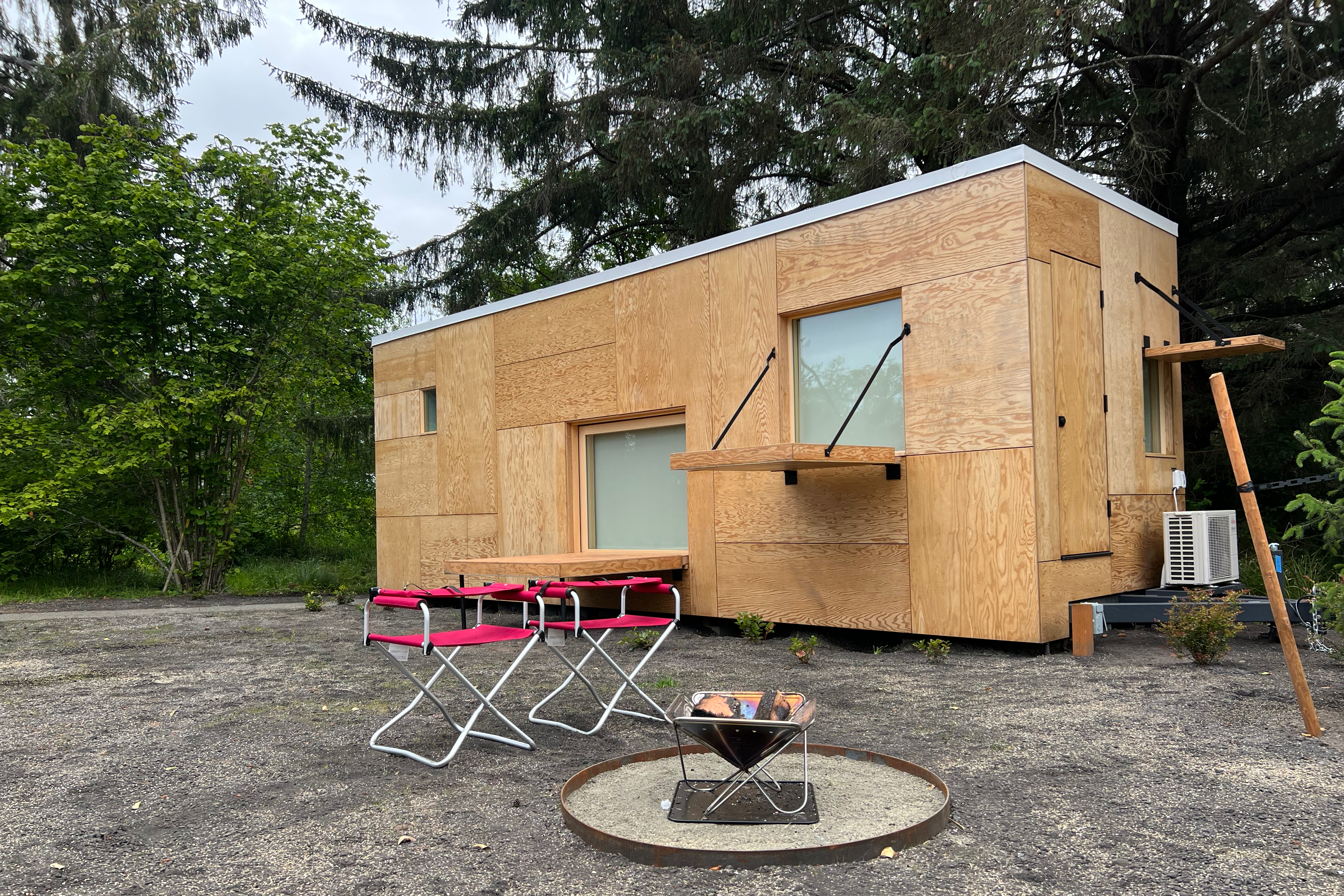
It is more expensive to stay at Campfield than at most campgrounds in the Long Beach area. But in the context of glampgrounds, hip camp stays, and even Airbnbs, it is competitive. Small field sites cost $85-110 a night, and large field sites cost $95-120 a night. Tent suites run for $160-270, and the jyubakos (tiny cabins) are $250-350.
All field sites, suites, and jyubakos can be booked through the Snow Peak Campfield Long Beach website. The location may soon offer day-use passes as well for people who want to enjoy the Ufuro Spa, Snow Peak Campstore, and other Campfield amenities without staying there.
East or West, Camping Is Best
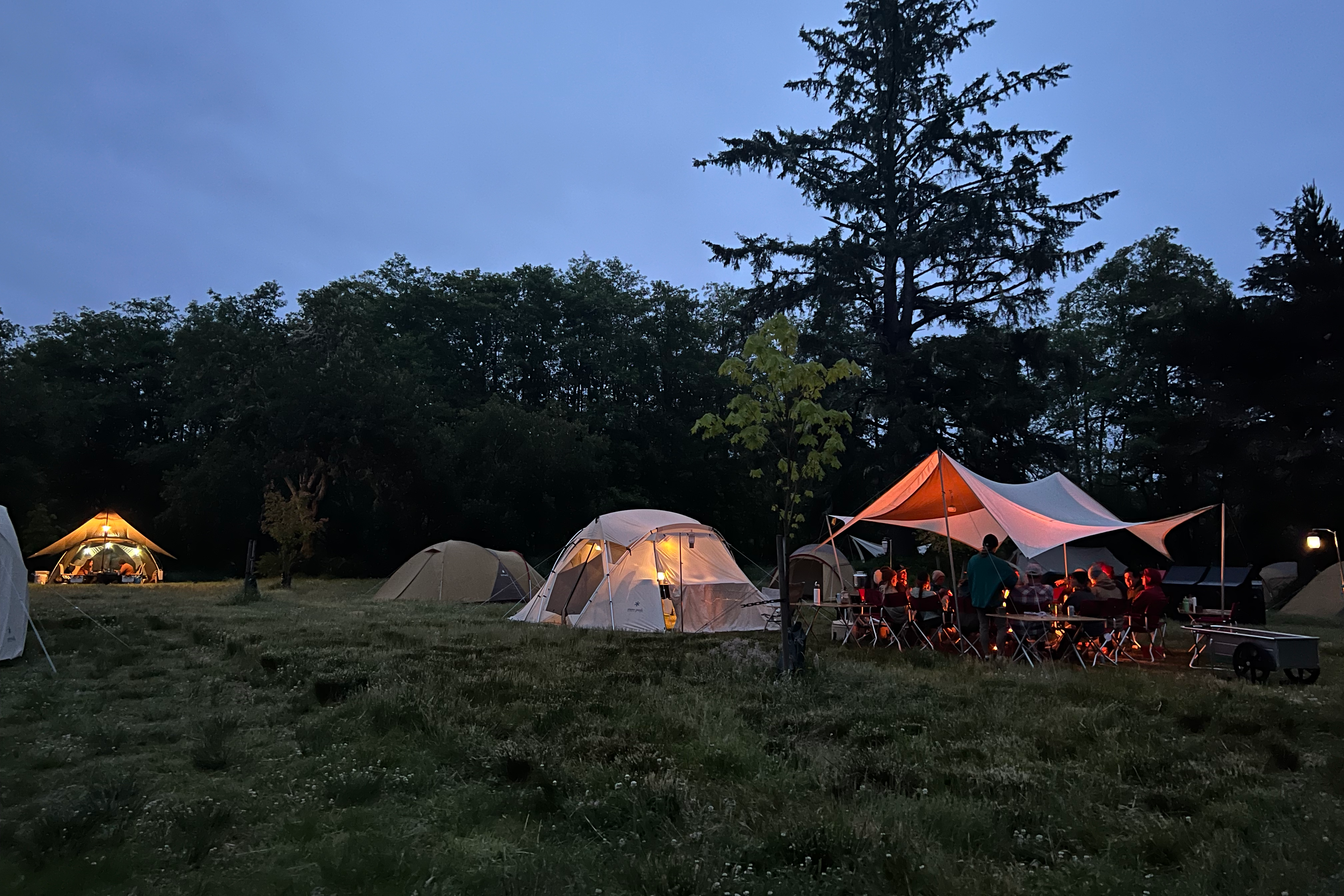
If you’re willing to shell out for a stay at Campfield, the experience is unique. I wouldn’t call it a true departure from American car camping, so don’t go into it expecting culture shock. I would, however, call it a spectacular campground with some distinctly Japanese amenities and aesthetics. The employees were all friendly. The landscape was beautiful. And it’s certainly a luxury experience.
We might eat fish and drink tea differently, but Campfield opened my eyes to some deep commonalities in our approaches to camping. The need to break away from the hustle of modern life, escape into nature with your best friends and family, and gather around a campfire with good food and fine company seems like a universal human desire.
Reis said something to that effect himself. “In a modern-day context, it’s easier to be connected but harder to belong,” he said. “The outdoors is a perfect antidote to that.”
